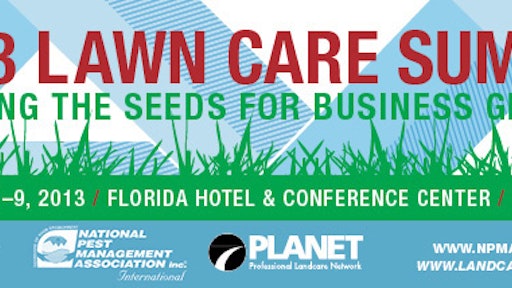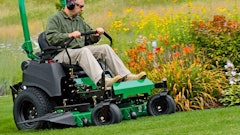
Mary Kausch of HR etc!! says that in order to know people, you have to know human nature. This can be a challenge for company owners and managers these days.
Today's workforce is very diverse—not just in terms of race, gender or creed—but also in terms of sheer age. Many of you employ a variety of people, some in their 20s and some in their 50s or 60s. There is no one-size-fits-all approach to managing these diverse, multi-generational teams.
"It's important to understand diverse generational values and attitudes," Kausch told a crowd of lawn care business owners at the 2014 Lawn Care Summit in Nashville this past January. "First, you have to understand why and how the workforce is changing. Next, you must increase awareness of how that is impacting your company. Finally, you must focus on what you can do every day to create a productive workplace."
Biggest workforce trends
Over the past five years, Kausch says some game-changing trends have emerged in society and, ultimately, the workplace:
- More diverse population
- Advancement of technology, i.e. smartphones, social media
- Higher employee turnover, mainly younger workers
- Some employees, on the other hand, are staying in jobs longer
- Employees often asking, "What's in it for me?"
- Employees want flexibility, i.e. childcare, maybe even eldercare in some instances
Additionally, "The workforce is aging," Kausch says. "Employers must learn how to attract the next generation that has both leadership and technical skills."
Some lawn care contractors wonder if that can even be done. It's a fairly daunting task, for sure. But given today's job market, especially for younger people, the pay in this industry really isn't all that bad. They can work outside and be healthier, which is important. And they can work for awesome companies that do good things for their communities and provide for career advancement—at least in the case of some companies. It's your job as a business owner to create a workplace that puts you in that elite category.
Understanding the generations
Kausch says generational differences aren't as much about age as they are about experiences. "An employee's generation is about reference points during their formative, coming-of-age years," she explains. "It's about events, places and things, and economic and social conditions."
Veterans (70-year-olds). They believe in hierarchy, authority, and good old-fashioned hard work. Loyalty and family are important. Sacrifice is a privilege, and being frugal is wise. Patience where rewards are concerned is also a hallmark of this generation. These folks are obviously phasing out of the workforce, taking with them some appealing traits for employers in the landscaping and equipment repair vocations.
THE LESSON: You'll probably never find another employee like "Jim". So shed a tear, buy him and beer, and move on.
Baby Boomers (50- to 70-year olds). These folks struggle to balance their desire to succeed with taking the time to enjoy the fruits of their labor. This is where the term "workaholic" comes from. Boomers are optimistic and competitive. They grew up in the booming post-war economy, so they've developed a sense that anything is possible.
THE LESSON: You must have a vision for your company. What do you stand for? How are you innovating and moving forward? What role do your employees play in implementing that vision, and how will they benefit?
Gen X (35- to 50-year-olds). These folks like new gadgets. They are under constant self-imposed pressure to prove themselves. They're also the most self-reliant and independent group, but a bit more casual with authority. They grew up seeing major institutions called into question, so they are rather skeptical.
THE LESSON: Don't just tell them what to do, tell them what to do and help them do it. Offer feedback and guidance. Recognize that your role as "boss" is really more of a roll as "coach" or "mentor".
Millennials (early-30s or younger). This group represents a lot of people, around 76 million by some estimates. They are realistic and streetwise, and their unique mix of savvy and social consciousness will transform the workplace landscape, according to Kausch. Millennials are pragmatic, loyal, confident and optimistic. They are green-minded and ambitious toward affecting change.
THE LESSON: Much like with the Boomers, it's important to articulate a vision for your company. In fact, here it's not a bad idea to involve employees in the crafting of that vision. And on the topic of corporate vision, social and environmental responsibility should probably be addressed.
New rules of employee engagement
As you think about the different generations represented by the employees of your organization, you can start to constructively think about employee engagement. "Engagement is the extent to which employees are motivated and contribute to the company's success," Kausch points out. "When engaged, employees are willing to apply discretionary effort to help the company achieve its goals."
With respect to engagement, remember the following:
- It is largely based on self-motivation
- You can't teach employees to care
- Employees want to be respected and appreciated
- Employees don't care what you know until they know you care about them
"Values and beliefs drive behavior, and values and beliefs are driven by needs," Kausch explains. "The top new rule of engagement is WIIFM, what's in it for me?" In other words, in order to engage employees and extract the best possible performance from them, employees must know how they will benefit from their job well done. This is where the whole concept of expectation/accountability/reward comes into play.
There's another thing you can do to better engage a diverse employee base: hire the right employees in the first place. In order to do that, you must have a thorough screening process in place. Outline how you can learn more about prospective employees during the interview process, largely through the questions you ask them, in order to determine if they're truly a good fit for the work they'll be doing and your company in general. Seek assistance from an HR professional if you think you need it.
This fits right into another new rule of engagement in today's economy: reducing employee turnover. A good chunk of the workforce is job hopping because some people are not content with their current jobs. But some people job hop because that's simply what they do. Don't settle for a job hopper. A good screening process will help you weed those folks out.
Here are a few other new rules to keep in mind:
- People communicate differently today, and texting is an acceptable form of communicating
- Always be looking for talent, even when you're not looking to immediately fill a position
- Re-recruit your existing employees by offering and providing feedback on your relationship
- Explain standards and expectations beyond production numbers
- Become a performance coach
- Become a legacy creator by sharing stories and knowledge
To really drive employee engagement today, Kausch says company leadership needs to do three primary things:
- Establish direction and performance-based compensation
- Communicate strategy and goals
- Build relationships with employees
The information in this article should help you to better understand how your diverse team thinks and why it behaves the way it does. However, Kausch offers one subtle warning: "Don't use this information to just cast stereotypes. Use it to become better listeners." In turn, you will become better managers in the process.




























